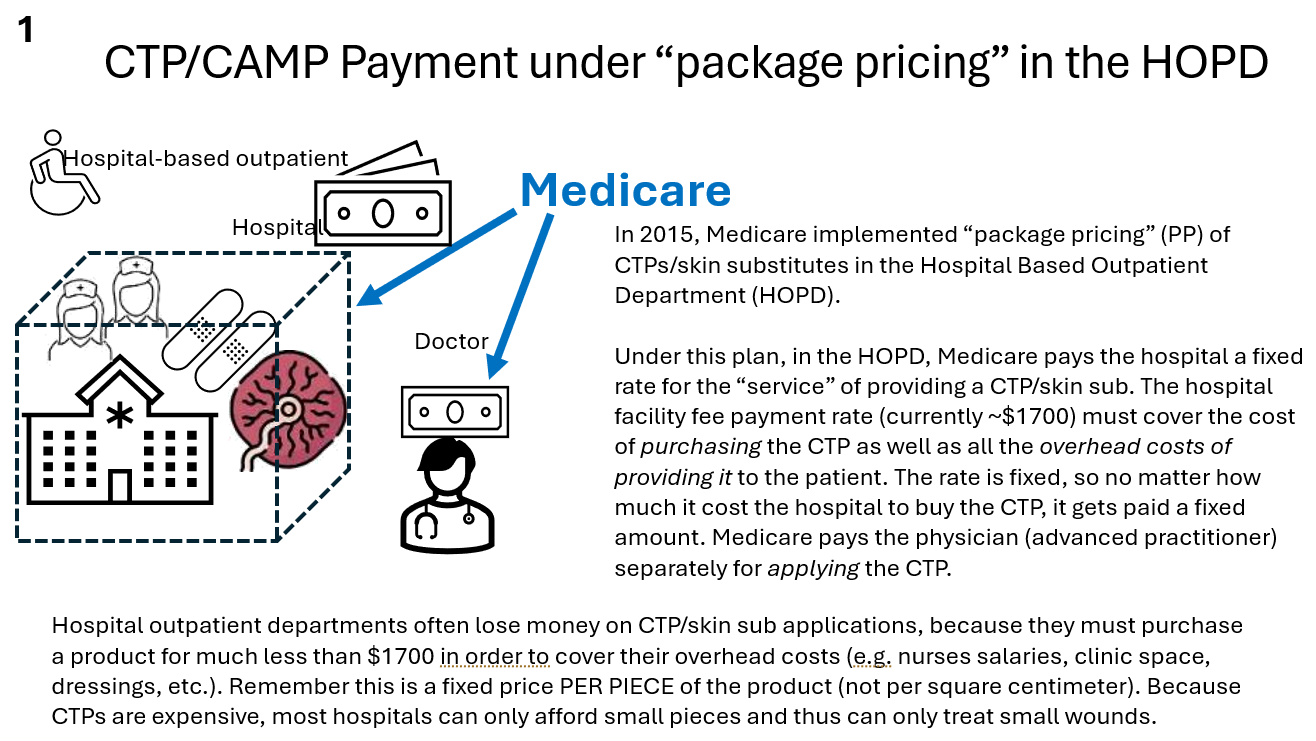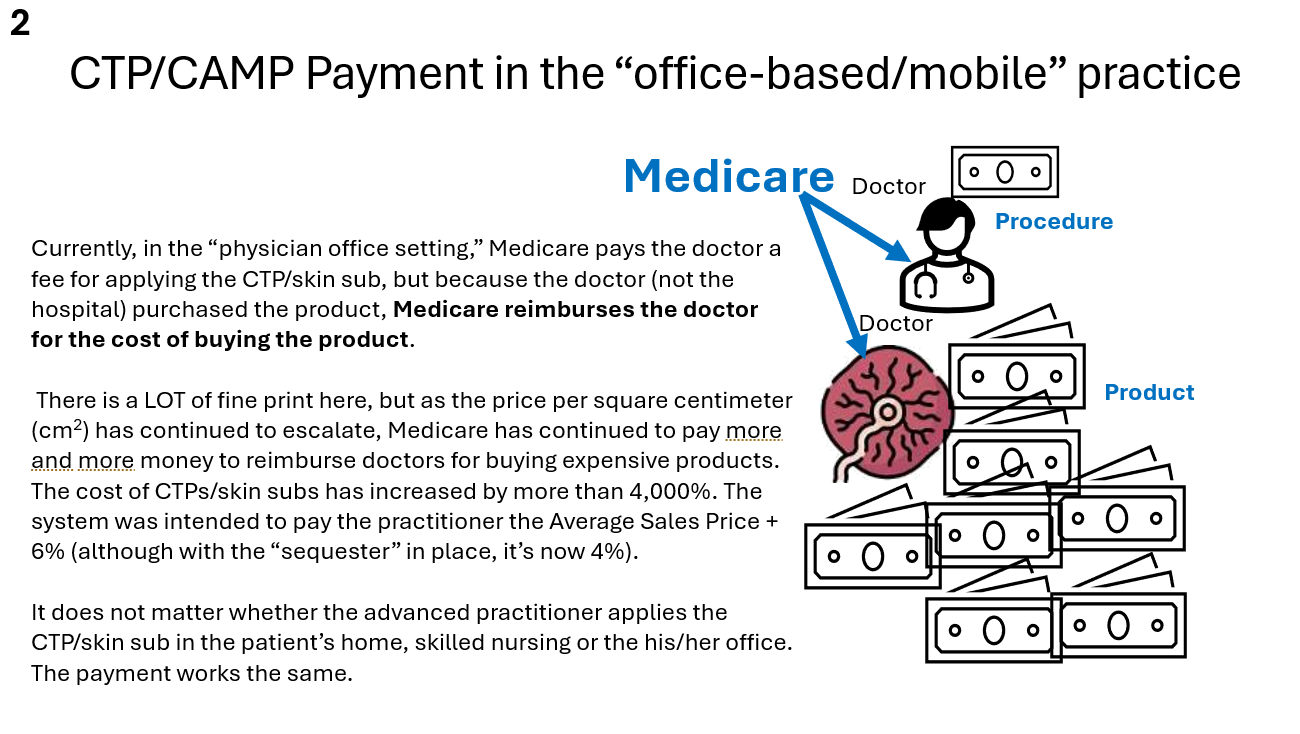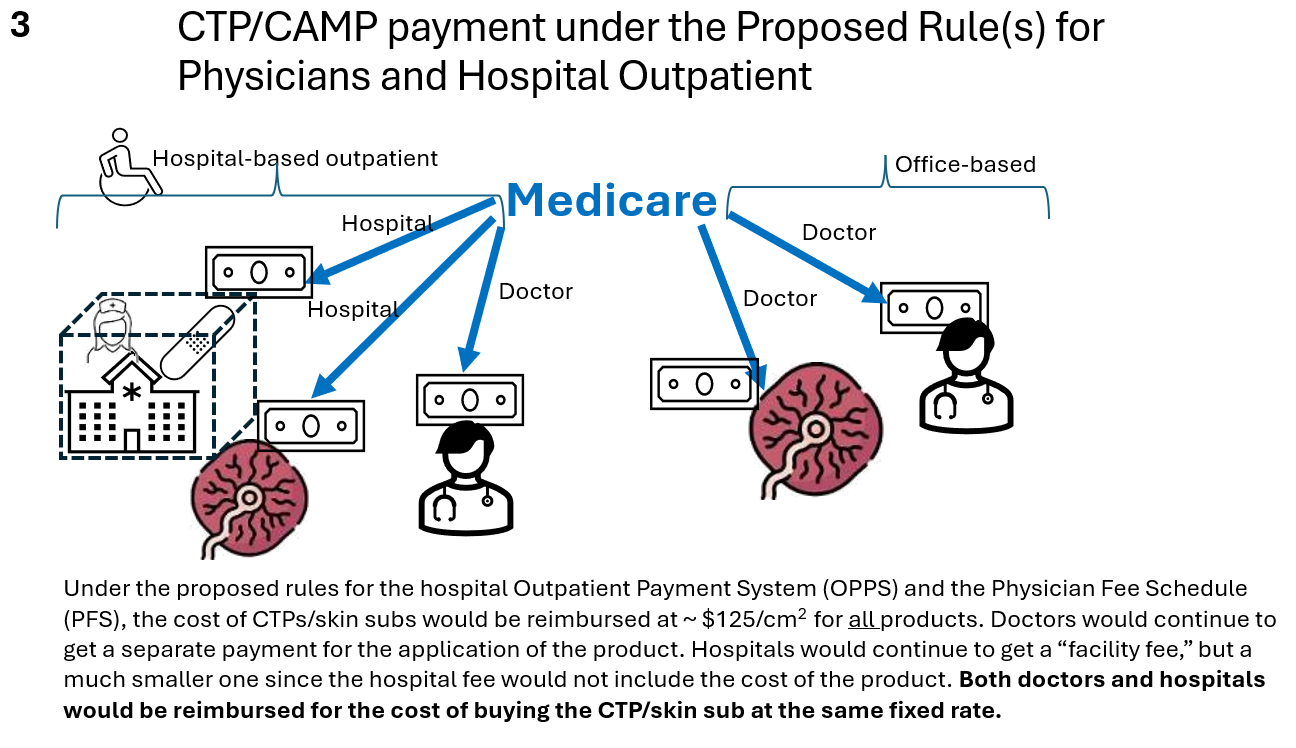I appreciate everyone who has emailed and messaged me their questions about the proposed rules for hospital outpatient departments and doctors’ offices! I have invited real experts in coding and reimbursement to provide guest but in the meantime, I will provide the illustrated version of “Skin Substitute payment for Dummies like me”.
Currently, payment for CTPs/skin subs is unfair in both the hospital-based outpatient department (HOPD) and the doctor’s office. However, the payment policies are unfair in different ways. In the HOPD, the hospital is paid a fixed price for the service of providing the CTP/skin sub that was set so low, hospitals can only purchase very small products, and after buying the products, the hospitals often can’t afford the overhead of providing the service. That’s the main reason that CTP/CAMP use moved into the office-based setting.
In the office-based setting, Medicare reimburses the physician separately for the cost of buying the product, regardless of how much the product costs (yes, there is fine print in here). Product costs have increased over 4,000%, with no evidence that the more expensive products work any better than the less expensive ones. The result is that patients are paying staggeringly high copays, Accountable Care Organizations are going underwater financially, and Medicare is hemorrhaging money. However, because Medicare pays doctors based on price per cm2 in the office-based setting, it is possible to treat very large wounds and patients with multiple wounds (which is nearly all of them).
The proposed rules for both the hospital outpatient department and the doctor’s office would pay a fixed rate PER SQUARE CENTIMETER for CTPs/Skin subs. That puts a cap on the patient’s copay, stops price escalation, helps control Medicare spending, and enables large wounds and multiple wounds to be treated in any place of service. Naturally, debate will rage for the next few months over what the right price per cm2 would be. However, such a system does make the Medicare payment policy for CTPs/skin subs more “fair” in lots of ways.
I admit that the graphics below are crude over-simplifications, but my large and highly paid staff of medical illustrators are all on vacation today, and I have not learned how to use AI tools well enough to make fancy illustrations. I also did not attempt to use the correct regulatory terminology. The door is open for those of you who are real experts to explain this properly (and draw it better) – but hopefully these simple illustrations will help in the meantime.
Additional Reading:
- A Ruptured Appendix and a Broken System – Caroline Fife M.D.
- The Age of Wisdom and the Age of Foolishness: A Tale of Two Wounds – Caroline Fife M.D.
- Disparities in Access to Care for CTPs / Skin Subs (and How Package Pricing in the Doctor’s Office Might Actually Improve Access to Them) – Caroline Fife M.D.
- A Problem Well-Stated is a Problem Half Solved… (Hopefully) – Caroline Fife M.D.
- How We Got Here – Answers to the Questions I Have Been Asking – Caroline Fife M.D.

Dr. Fife is a world renowned wound care physician dedicated to improving patient outcomes through quality driven care. Please visit my blog at CarolineFifeMD.com and my Youtube channel at https://www.youtube.com/c/carolinefifemd/videos
The opinions, comments, and content expressed or implied in my statements are solely my own and do not necessarily reflect the position or views of Intellicure or any of the boards on which I serve.







Did you actually highlight that the CTP spending was NOT so much in POS-11 office but POS-12? And hey what about those facility fee co-insurance dollars and $270 copayments that my patients tell me they get hit with upon arrival to the waiting room to see a board certified podiatrist or emergency medicine doc or retired burn – plastics surgeon for 90 seconds or less (with a bell on the door when the time is up). Let’s really shine on the real world here. And the hospital will just move the larger wounds to the OR which may actually be the safest place for them anyway under the DRG bundle payment for sepsis. We know these details are important to the collective and certainly benefits the financial gorillas of hospital networks. ACOs are hit with big bills becuase they are not interconnected with the suppliers or vendors of these services as they really should be so they have zero line of sight on the spending until 90 days later when the mother ship does a look back to tell them they over spent. The claims data EDI is behind by 2 years at the CMS level and at least 75 days in the post acute space.